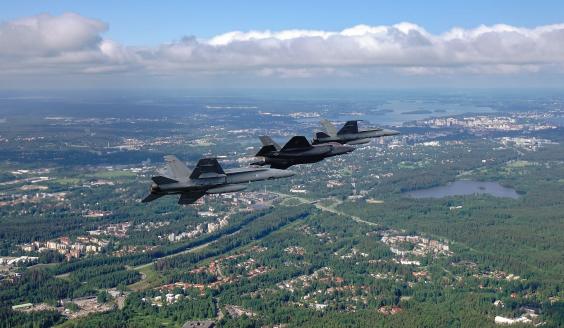U.S. Pilots Prepare Finnish Personnel for F-35 Era
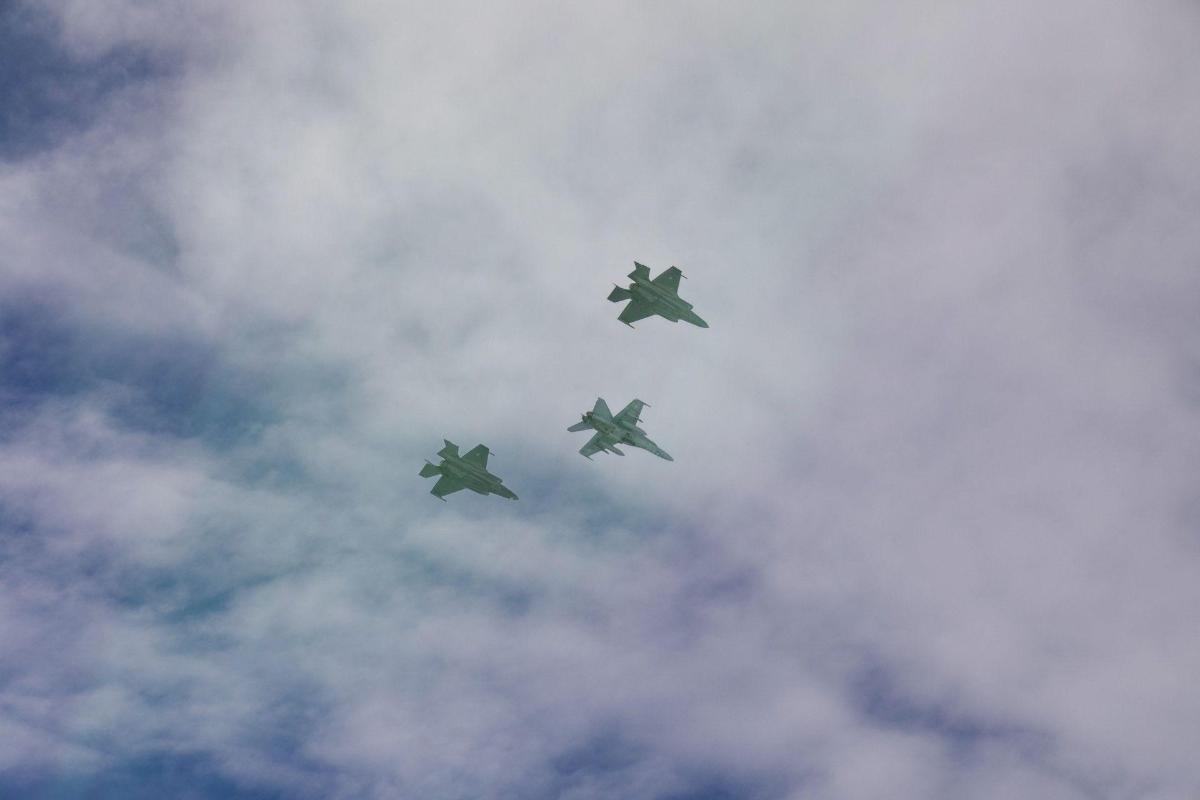
In January, the Air Combat Centre organised a training event at Satakunta Air Wing, where five U.S. F-35 pilots arrived to inform Finnish Defence Forces (FDF) personnel about the F-35’s capabilities and operating the fighter jet.
Five U.S. F-35 pilots from Luke Air Force Base in Glendale, Arizona, visited Pirkkala Air Base in January when the Air Combat Centre arranged a training session for FDF personnel. The purpose of the event was to provide insight into the F-35's capabilities and operational potential, as shared by the pilots, and to explain how these factors will impact the operations of the different services and branches of the Finnish Defence Forces. The goal was to expand understanding of the capability entity to be introduced in Finland. The event also included presentations on the Air Combat Centre’s research and system development activities, as well as the F-35 FENIX simulators built at the Centre last year.
The event was led by Major Mikko Ruonala, Deputy Director of the Air Combat Centre, and involved approximately 100 participants, including the Finnish F-35 Programme leadership and Air Force personnel as well as representatives of the Defence Command and the Army and Navy. The participants' tasks are related to the planning and implementation of F-35 operations.
– The substantial number of experts from across the Finnish Defence Forces’ operational field at the event effectively portrayed our future set-up, where the F-35 will be a significant FDF capability operated by the Air Force. I believe the briefings on performance and practical examples made it clear to all participants that the F-35 is not just a leap in capability for the Air Force but for the entire Defence Forces, says Colonel (ret.) Henrik Elo, F-35 Programme Director.
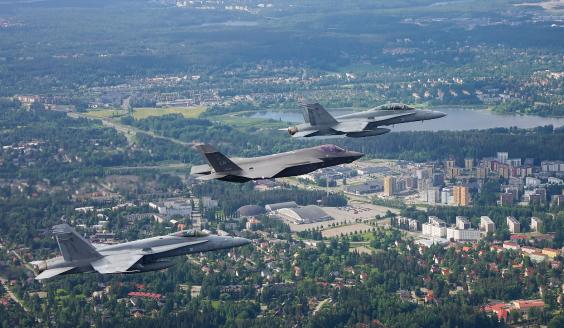
F-35 Performance Expands Perspectives of FDF Services
In the future, joint and multi-domain operations, or operations across various domains, will become even more important within the Finnish Defence Forces. Cross-service cooperation will become more visible in FDF planning and execution of operations. The goal is to establish seamless joint operational capabilities between the services and allies.
In addition to networking capabilities, a key feature of the F-35 is its wide situational awareness enabled by diverse sensors and sensor fusion, as well as its extensive connectivity and integration with various systems and command posts. The pilots explained what the F-35 can do and how the services can factor its operations into their planning.
The F-35 introduces new types of missions, which all FDF services will be able to leverage. The F-35 offers more versatile options for task selection compared to the Air Force’s current F/A-18 fleet. Exploiting the F-35’s capabilities requires expanding perspectives in joint planning within the Finnish Defence Forces, as the range of available task types is broader than before. The F-35 has significantly better capabilities than the Hornet in supporting operations of the Army and Navy, for example.
– From the Army’s outlook, the training session reinforced the work done so far on how to utilize the F-35’s capabilities in the Army, including Army aviation and special operations forces. The session clearly sparked interest in the F-35’s new opportunities across all services of the Defence Forces, say two officers from the Army Command.
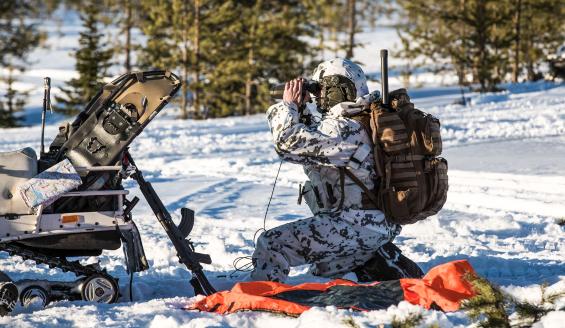
The F-35 will significantly impact the Finnish Defence Forces’ joint planning. At the event, the Army and Navy received broader views and input on what the F-35’s capabilities mean for the operations of the different branches and how these opportunities can be integrated into the operational planning and joint operations of the Finnish Defence Forces.
– The session was valuable for the Navy, even though we already have some understanding of the F-35’s capabilities. What stood out was the mutual understanding across all three services that the F-35, as a resource, will serve the entire Defence Forces. We want to make the most of it together, which requires coordinating procedures, systems, and tactics. From the Navy’s perspective, the F-35 system will significantly enhance our performance capabilities, says a Navy Command commander who participated in the event.
Colleagues from United States Brief Finns on Capabilities of F-35 Lightning II
The five U.S. Air Force F-35 Lightning II pilots of the 310th Fighter Squadron, 56th Fighter Wing, contributing to the event currently fly the F-35 but they also have experience with other aircraft types. One of the pilots, call sign Semi, has been flying the F-35 fighter for 18 months. His background includes twelve years of experience with the A-10C Thunderbolt II close air support jet and two years with the F-16 Fighting Falcon multirole fighter.
– The F-35 is a new type of aircraft with new tactics. Future F-35 pilots have to think about how to use the aircraft in a different way – what it is capable of that the F/A-18 can't do. The F-35's data can be shared among the Army, the Navy and the Air Force, allowing everyone to see the complete picture. Therefore, the F-35 becomes a force multiplier, as it provides situational awareness for everyone, not just itself, the U.S. pilot says.
Semi regards sensor fusion is the best feature of the F-35.
– The real capacity of the F-35 is its situational awareness. Sensor fusion happens autonomously in the background, without the pilot having to focus on it. The system gathers all the information and presents it in an easily digestible format for the pilot. This allows a large amount of information to be received without the pilot using significant cognitive capacity, says the F-35 pilot.
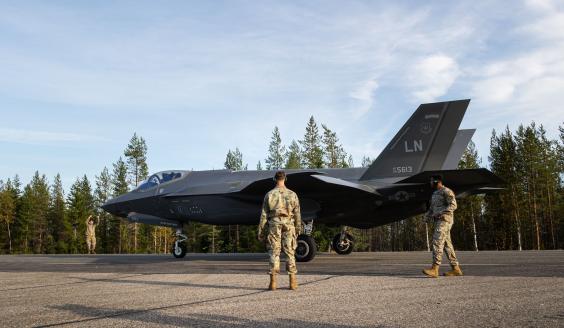
Finland will receive the first F-35 fighters during the F-35 initial training in the United States, starting in the autumn of 2025, and the first Finnish Air Force F-35 fighters will arrive here in the latter half of 2026.
– Right now, as the Finnish Air Force does not yet have their F-35 fighters, it's important that we can assist in the learning process. You won’t have to go through the same “growing pains” that we went through in the past. That's why being here right now, before the aircraft are actually received, gives us the opportunity to help you prepare. When the aircraft arrive, you'll be able to hit the ground running and start using the aircraft effectively much sooner, Semi remarks.
The F-35 pilot feels that the event organised by the Air Combat Centre was rewarding for both sides.
– As close and interoperable as NATO countries are, each country always has some different capabilities and something that the country does in its own way. It's always interesting to learn about the capabilities of different countries and what kind of military capabilities each nation is able to contribute to the common pool. I believe that in events like these, the interaction is always two-way: we share information but we also receive it. We learn together more about how each of us operates, the U.S. pilot says.
Transition from F/A-18 to F-35 Expected to Be Efficient
Personnel from the Finnish Air Force involved in F-35 operations attended the training session. Most of the participants were pilots, but there were also representatives from control and reporting centres. One participant was Lieutenant Colonel Rami Lindström, the Commander of Fighter Squadron 31 at Karelia Air Wing. Lieutenant Colonel Lindström found the session useful.
– It was excellent that personnel from all services of the Defence Forces, including special operations forces, attended the session. This enhances understanding of the F-35’s capabilities and operation within the Defence Forces. What I think most participants took away from this session is trust in the very high capabilities of the F-35. I believe that everyone’s confidence in the future will be even stronger, says Lieutenant Colonel Lindström.
Lindström notes that the F-35’s capabilities will change the Finnish Air Force’s scope of mission.
– The range of mission types with the F-35 is clearly broader than with our current fleet. Thanks to the F-35’s versatile sensors, the idea of air warfare will change significantly compared to what we are used to. Overall, the F-35 is an impressive aircraft, Lindström says.
The training session also covered the integration of fourth- and fifth-generation fighter capabilities. Having flown the Hornet for 22 years, Lindström finds the transition from the F/A-18 to the F-35 intriguing.
– The Hornet is a good aircraft, and it still has capabilities that make it useful, but in modern warfare, it tends to fall behind. I would say that by integrating the capabilities of the fourth- and fifth-generation fighters, the Hornet will gain new momentum for its final years, when supported by the F-35’s sensors, Lindström says.
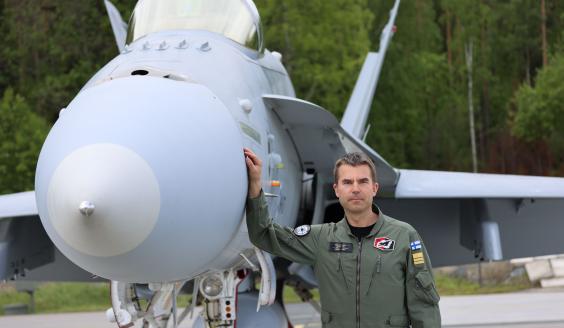
Air Combat Centre Supports Introduction of F-35 Fleet
The Air Combat Centre, based at Satakunta Air Wing, primarily focuses on research on air combat and base combat operations, as well as developing performance capabilities for the operational environment. The centre is responsible for flight testing and operational testing of aircraft in the Finnish Air Force.
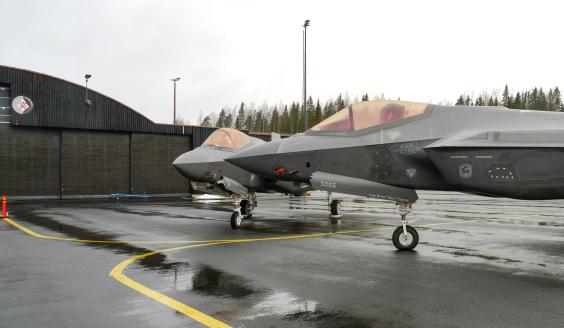
During the introduction into service of the F-35 fleet, the Air Combat Centre will support the process with its expertise and resources. The Centre’s personnel will receive information on F-35 tactics, techniques, and procedures, analyze it, and provide necessary insights to facilitate a smooth introduction. Key tasks include understanding how Finland’s environment and threat landscape will affect the F-35’s integration, what expertise is required within the Finnish Defence Forces, what is already in place, and where additional knowledge is needed. The Centre will also focus on coordinating virtual environments, particularly how Live, Virtual, Constructive (LVC) elements need to be integrated.
The first Finnish contingent will begin their F-35 initial training, including theory and simulator sessions, at Eglin Air Force Base in Florida this autumn.
